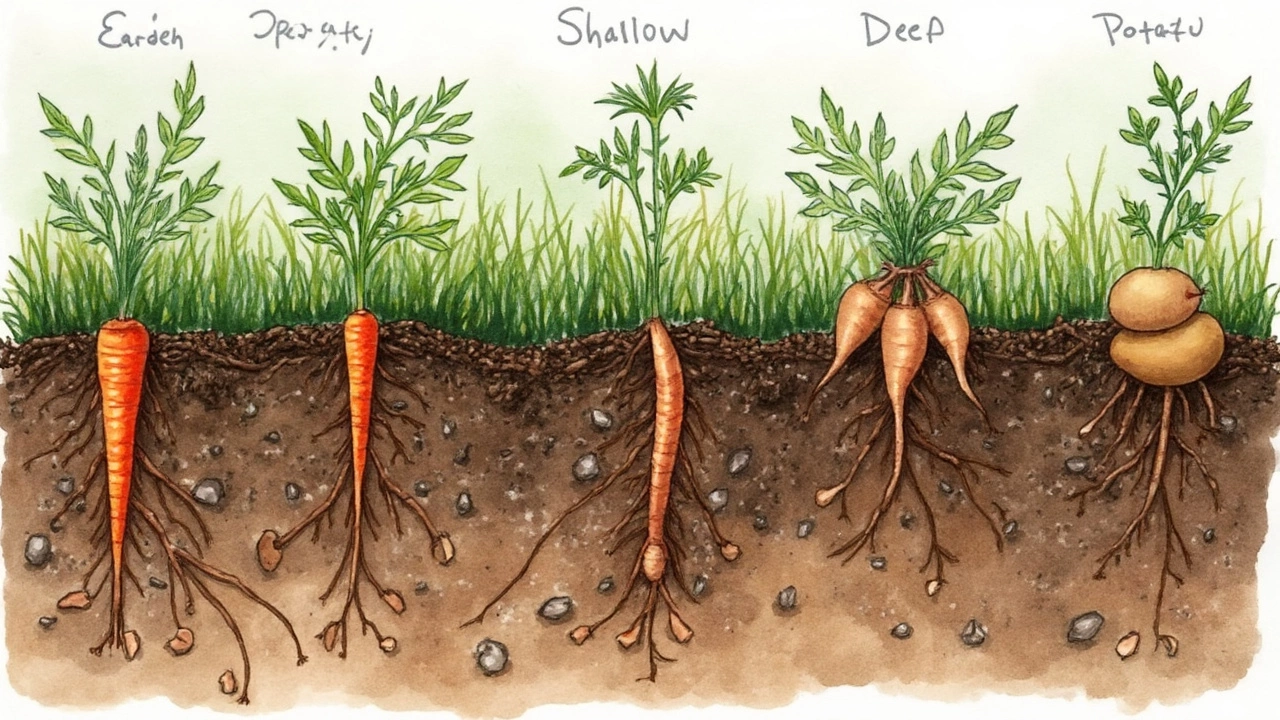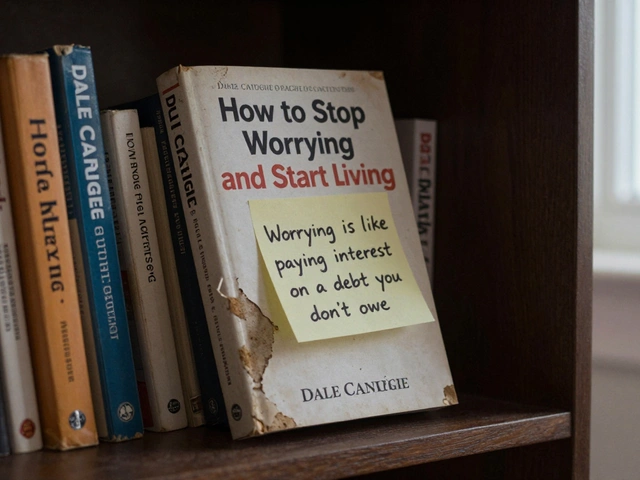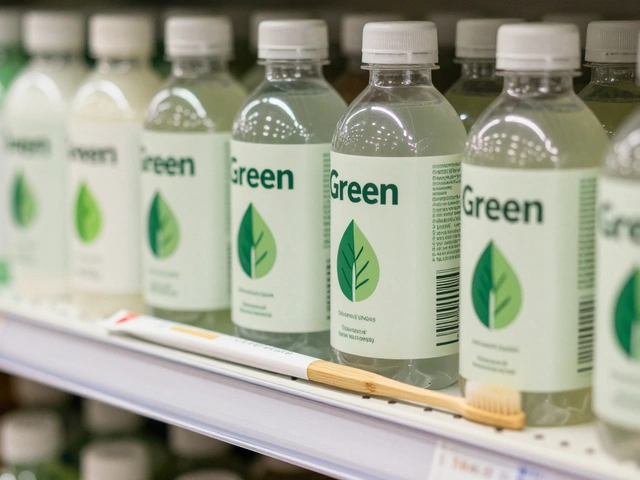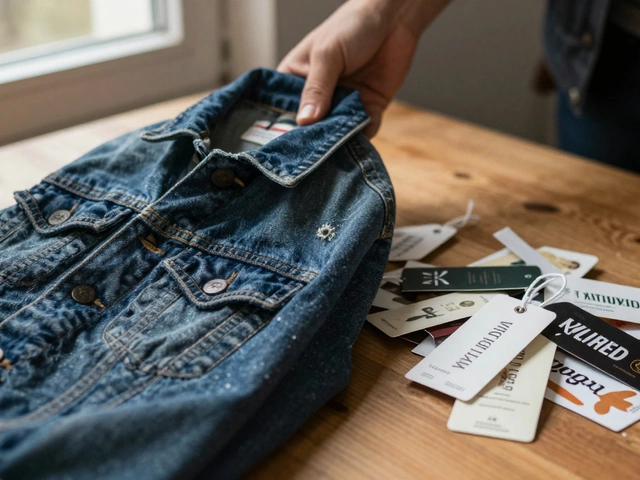Ever spent all afternoon churning up your garden only to end up with tired arms and unimpressed tomatoes? The secret usually isn’t in how sweaty you get, but in how deep you till. Here’s the real deal: not every plant or soil needs the same treatment. Go too shallow and roots hit a wall. Dig too deep, and you could wreck the balance that healthy plants need.
Right off the bat, you should know that there’s no single ‘magic’ depth for every garden. Veggies with deep roots? They have different needs than shallow-rooted flowers or herbs. Plus, some soils bounce back just fine after deep tilling, while others turn into a mess. The trick is matching your tilling depth to your garden style and your plants.
If you’re prepping new ground, or working heavy clay, you might need a deeper start — but not every year. On the flip side, if your soil is sandy or loose, you probably don’t need to go overboard. Save your back and do what actually works. Let’s dig into the facts so you can work smarter, not harder.
- Why Does Tilling Depth Matter?
- Understanding Different Soil Types
- Vegetables vs. Flowers: Do They Need Different Depths?
- How Deep Is 'Deep'? Numbers You Can Use
- When NOT to Till Too Deep
- Tools, Tricks, and Quick Tips
Why Does Tilling Depth Matter?
How far you dig into your soil can seriously change how your garden performs. Dig too shallow, and plant roots fight for space. Go too deep without a plan, and you risk stirring up weed seeds or messing up the good balance your soil already has. The sweet spot depends on what’s underneath and what you’re growing.
The main reasons tilling depth is a big deal come down to root growth, soil structure, water flow, and nutrients. When you break up soil just enough, you help roots spread easily, letting plants soak up water and nutrients like a sponge. Too shallow, and roots hit a hard lower layer called hardpan. Too deep, and you might bury the nutrients plants need on top while waking up a whole new batch of weeds.
- Garden tilling depth affects not only roots, but also how soil organisms do their jobs. Earthworms, for example, like certain layers—over-tilling can drive them away or bust their tunnels.
- Water drainage improves with good tilling depth, but if you go too deep, sandy or loose soils can lose moisture even faster.
- If your soil was compacted by foot traffic or machinery, tilling can break up hard spots and help roots push deeper. But again, you don’t want to create a deeper compacted layer by tilling way past the good stuff.
| Tilling Depth | Typical Results |
|---|---|
| 2-4 inches | Good for lawns, most herbs, annual flowers |
| 6-8 inches | Best for most veggies: tomatoes, peppers, beans |
| 10+ inches | Needed for root crops: carrots, potatoes; or first-time garden spots |
Misjudging tilling depth is one of the top reasons gardens flop. So, before firing up that tiller, think about your soil type and plant choices. A little planning now saves a ton of hassle later.
Understanding Different Soil Types
Soil isn’t just dirt. The type of soil hanging out in your yard decides how deep you need to dig when using a garden tiller. If you get this part wrong, your plants pay the price. There are three main kinds most people deal with: clay, sandy, and loamy.
Clay soil feels sticky and clumps together. It holds water—sometimes too much. Roots can easily get choked out if the ground isn’t loosened enough. For clay, tilling 8-12 inches deep is often right, especially the first time around. This gives roots some breathing room. Just make sure the soil is moist, not wet, before you start; otherwise, you’ll end up with hard chunks instead of fluffy soil.
Sandy soil drains fast and feels gritty. It’s usually loose enough already, so you don’t have to break your back tilling deep—6-8 inches works for most crops. Going deeper won’t really help because this type already lets roots dive down. Think of sandy soil like a relaxed roommate: keep it tidy, but don’t overdo it or you’ll stir up more trouble than you want.
Loamy soil is the jackpot: dark, crumbly, and holds water just right. If that’s you, good news—you only need to till 6-10 inches deep before planting. Basically, just give it a once-over to mix in compost or fertilizer and break up last year’s crust.
If you don’t know what soil you’ve got, do a quick squeeze test. Grab a handful of moist (not soaking) soil and squeeze. Does it stay in a ball and feel sticky? Probably clay. Does it fall apart and feel gritty? That’s sand. Stays together but crumbles with one tap? Lucky you, that’s loam. Adjust your tilling depth from there, and your plants will thank you by actually thriving.
Vegetables vs. Flowers: Do They Need Different Depths?
Not all garden plants are created equal when it comes to tilling depth. Vegetables and flowers often play by different rules, and giving them what they like can mean the difference between a lazy harvest and a bumper crop. Here’s where folks get tripped up: deep-rooted plants need more room to dig in, while shallow-rooted ones are just fine with a lighter touch.
Let’s break it down. Most vegetables—especially the heavy lifters like carrots, tomatoes, or potatoes—want more loosened soil beneath them. Their roots can go anywhere from 12 to 24 inches deep, and hard-packed ground at the bottom of the trench turns into a roadblock. For these plants, tilling at least 8 to 12 inches works best. If your soil is tough or never tilled, going to 12 inches on that first run pays off.
Flowers come in all root shapes and sizes, but the usual suspects—think marigolds, pansies, or petunias—have roots that reach only about 6 inches down. For most annual flowers, 6 inches of loose soil is plenty, and tilling deeper honestly just wastes energy. Some perennials and shrubs are the exception—they might want more depth, but for your basic, colorful flower bed, that’s rarely needed.
Here’s a quick cheat sheet for common garden plants and their preferred tilling depths:
| Plant Type | Root Depth | Suggested Tilling Depth |
|---|---|---|
| Carrots (vegetable) | 12-24 inches | 12 inches |
| Tomatoes (vegetable) | 18-24 inches | 8-12 inches |
| Potatoes (vegetable) | 12-18 inches | 8-10 inches |
| Marigolds (flower) | 6 inches | 6 inches |
| Petunias (flower) | 6 inches | 6 inches |
| Roses (shrub) | 12-18 inches | 10-12 inches |
For mixed beds with both flowers and veggies, meet in the middle: tilled to about 8 inches does the trick for most setups.
One more heads-up—going too deep with your garden tilling depth can actually do more harm than good, especially if you mix up dead, compacted layers at the bottom. If you’re not sure, start shallow and only go deeper where you know roots need it. Play the long game, and your plants will thank you—less sweat for you, more blooms and bites for your table.

How Deep Is 'Deep'? Numbers You Can Use
If you’re after straight-up numbers, here’s what you really need: for most veggie gardens, aim for 8 to 12 inches of loose soil. That’s enough for tomatoes, carrots, and beans to spread their roots without hitting a brick wall of hard dirt. Flowers and small herbs? They’re cool with about 6 inches, unless you’re planting big dahlias or sunflowers, which like it a bit deeper.
Got shrubs or fruit trees in your plans? They need more oomph—think 12 to 18 inches for their starter holes, but you’re not tilling an entire bed that deep unless you’re training for a triathlon. For raised beds, fill your frame with at least 10 inches of loose mix, so even finicky root crops won’t struggle.
- Garden tilling depth for standard veggies: 8-12 inches
- Shallow-rooted plants (lettuce, radish): 6 inches
- Root crops and tall flowers: 10-12 inches
- Shrubs/small trees: dig up to 18 inches, but only where you’re planting
- Raised beds: fill at least 10 inches deep
One quick tip: don’t break your back tilling deeper than your plants really need. Too much stirring can mess with good soil structure, especially if you do it year after year. Most backyard gardens thrive with a single deep till every few years and lighter surface work in between. And if your soil is already loose and crumbly, you can skip deep tilling entirely.
When NOT to Till Too Deep
Going overboard with tilling sounds thorough, but it can cause more trouble than you think. When you till deeper than your plants really need, you might end up messing with the natural layers that keep your garden healthy. Soil has its own setup—topsoil full of nutrients on the surface, and subsoil that’s denser and not as friendly to roots. If you till too deep and mix those layers, you can actually dilute the good stuff your plants need.
One big risk is bringing up weed seeds that have been buried and harmless. Give them light and air, and suddenly you’re running a weed nursery. Deep tilling in clay-heavy soil can bring up chunks that dry out like bricks. In fact, the USDA has pointed out that repeated deep tilling can break down soil structure, making it more likely to erode and less able to soak up water.
Here’s where you should back off on the deep tiller:
- Your garden already has loose, healthy soil (save the effort, your plants will thank you).
- You’re planting shallow-root vegetables or flowers.
- Your plot is on a slope—deep tilling can up the risk of soil washing away after heavy rain.
- You’ve added lots of compost or mulch, which keeps the top few inches rich already.
- It’s the middle of the season and you don’t want to disturb growing roots or underground critters.
Check out this quick table for the differences between shallow and deep tilling:
| Condition | Shallow Tilling (2-4 inches) | Deep Tilling (8-12 inches) |
|---|---|---|
| Healthy garden soil | ✅ Best choice | ❌ Usually unnecessary |
| Heavy clay/compacted soil | ❌ Not enough | ✅ Good to break up for new beds |
| On a slope | ✅ Lower erosion risk | ❌ More erosion risk |
| New garden area | Maybe, depends | ✅ Helps with soil start |
| Crops with shallow roots | ✅ Ideal | ❌ Overkill |
Bottom line: save the garden tilling depth drama for new, tough plots or when you’re totally renovating. Otherwise, lighter tilling protects both your back and your soil’s best features.
Tools, Tricks, and Quick Tips
Tilling doesn’t have to be high-tech, but picking the right tool for your soil makes life way easier. For small beds or raised gardens, a hand cultivator is often enough. If you’re tackling a bigger plot, a gas-powered rototiller saves time, especially on heavy or clay soils. For in-between jobs, electric tillers are lighter but still get the job done for most home gardens.
Here’s a quick look at which tool fits which job:
| Tool | Best For | Key Benefit | Downside |
|---|---|---|---|
| Hand Fork | Small beds, tight spaces | Cheap, precise | Works you harder |
| Manual Cultivator | Raised beds, loose soil | Less noise, better control | Not for compacted soil |
| Electric Tiller | City yards, light soil | Lightweight, easy to store | Struggles with heavy soil |
| Gas Rototiller | Large or clay plots | Powerful, wider coverage | Heavy, needs regular maintenance |
Want crisp rows and thriving plants? Skip tilling when your soil is too wet. If dirt sticks to your shovel like brownie batter, wait a day or two. Wet tilling turns soil into clumps that dry like bricks.
Keep these tricks in mind and your work will pay off:
- Test your soil moisture first. Squeeze a handful. If it falls apart, you’re good to go.
- Don’t till deeper than necessary. Six to eight inches is plenty for most backyard veggies.
- Mix in compost while tilling for a quick nutrient boost.
- Always clear rocks and roots before you start, or risk jamming up your tiller.
- Switch up your tilling pattern every year. This keeps soil structure healthier and helps roots spread.
And here’s a pro tip: You don’t have to till the whole garden every season. Top-dressing with compost and gently mixing it in by hand is often enough for established beds. This keeps the garden tilling depth in the sweet spot where roots can dig deep without you wrecking the ecosystem below.









